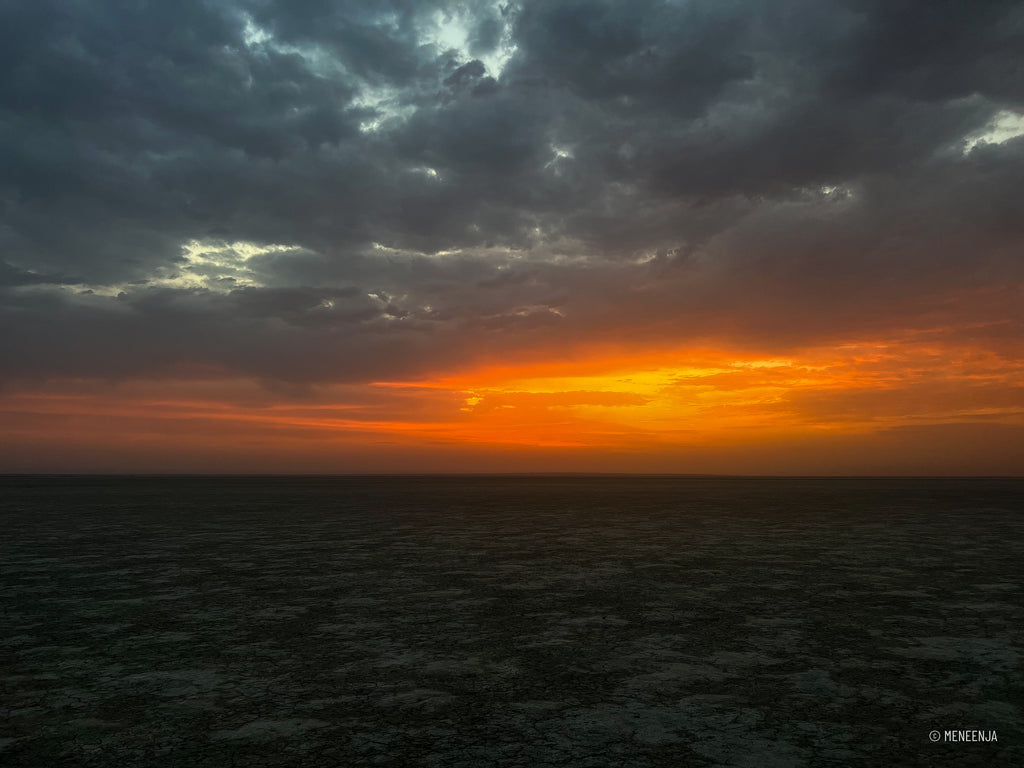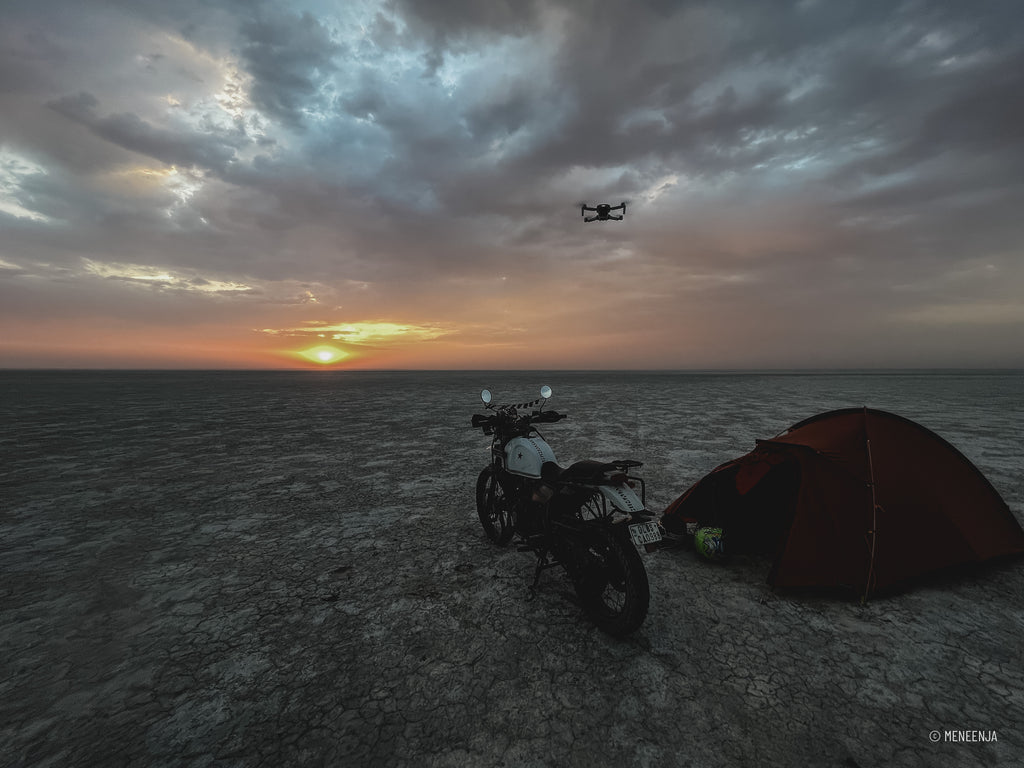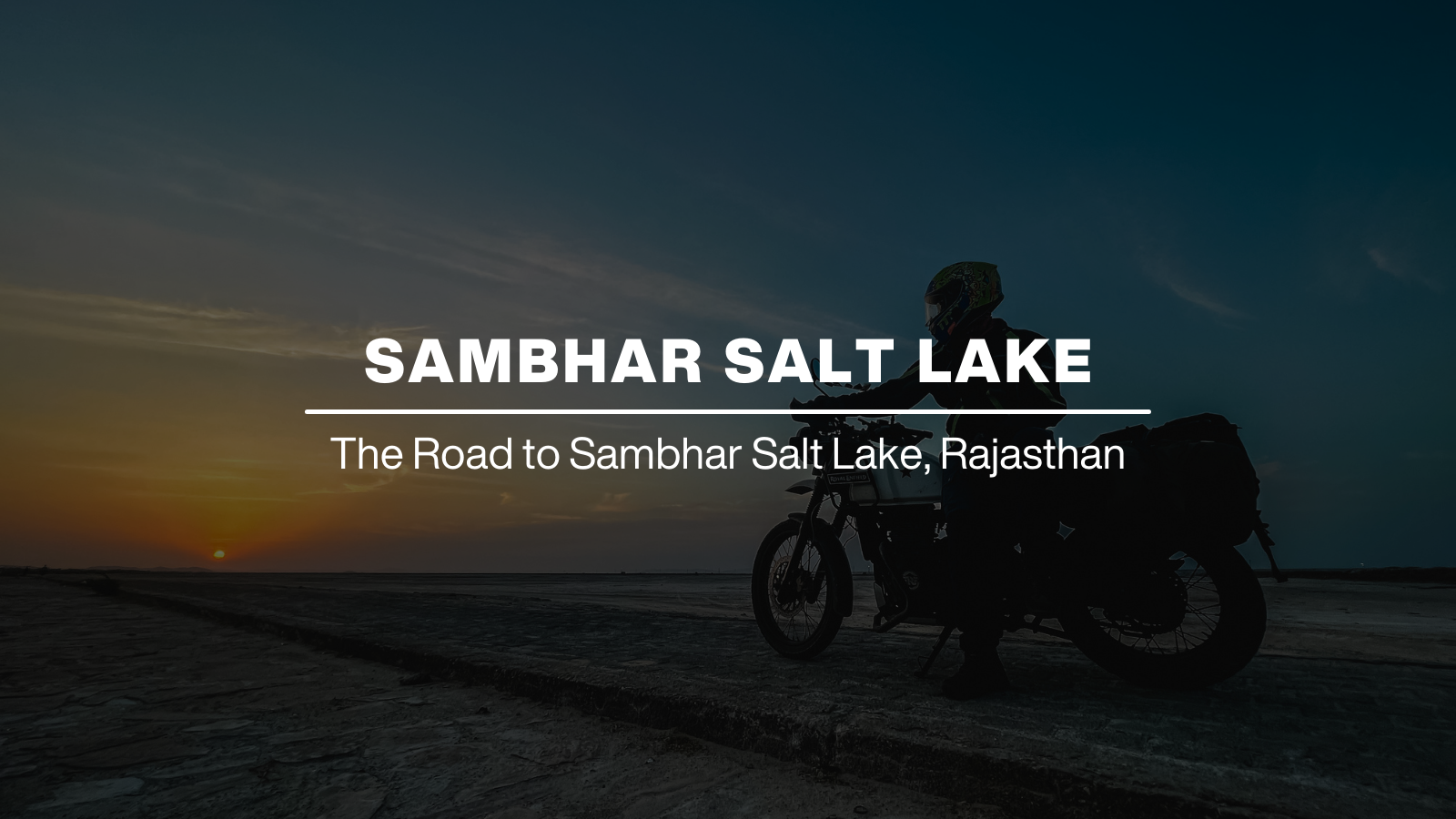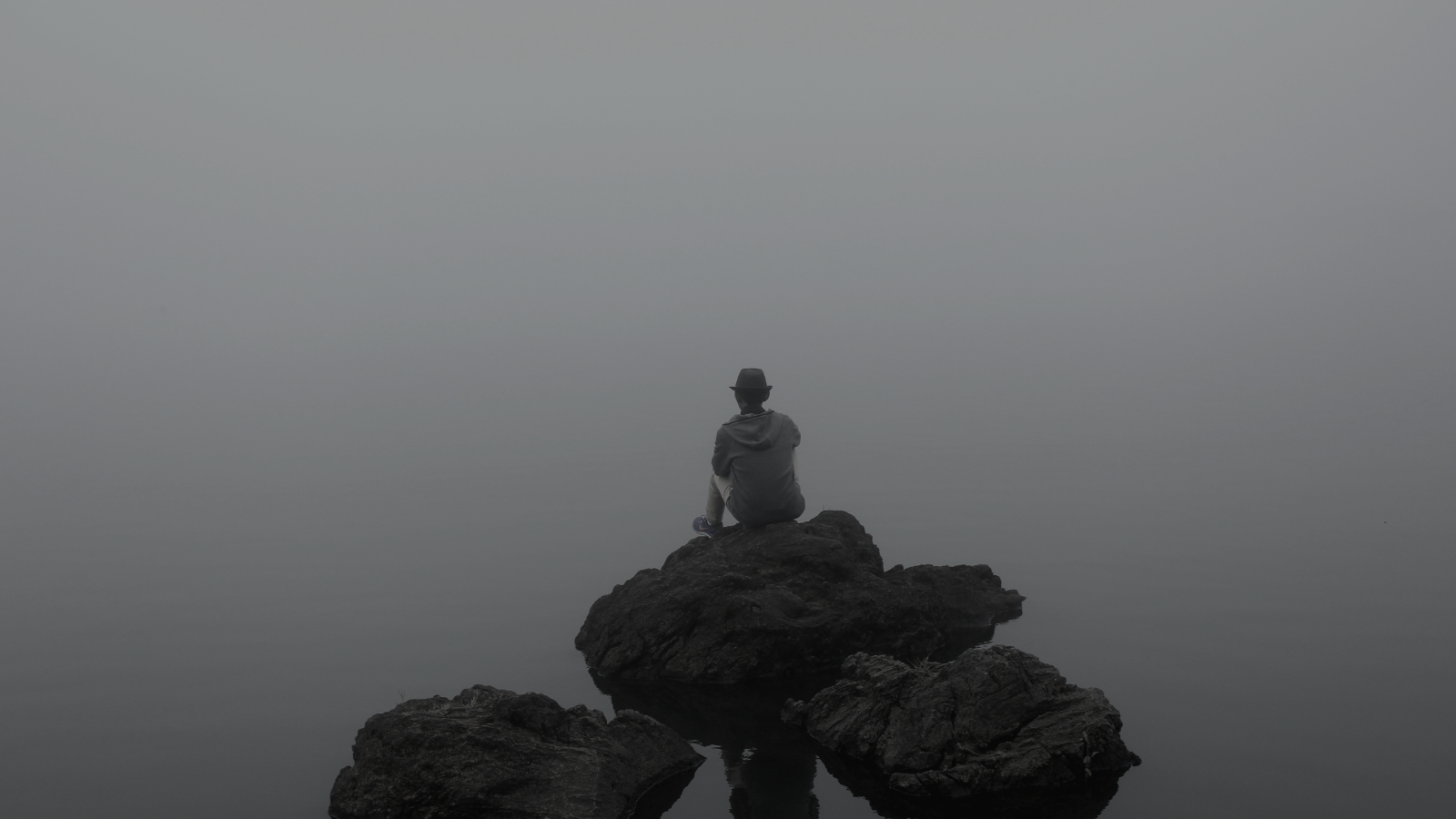By Meneenja
Sambhar Lake is India's largest saline lake, measuring 190 square kilometres when full. It is located about 80 kilometres (50 miles) southwest of Jaipur and about 350 kilometres (220 miles) from New Delhi, where my ride was supposed to begin. It lies next to the historic Sambhar Lake town. Even after the monsoon, this vast body of glacial saline is only 0.6 cm deep on average and never more than 3 m deep. It is 22.5 kilometres long and varies in width from 3 to 11 kilometres. Its vast salt marshes, rich history, and thousands of migratory birds, particularly pink flamingos, are what make it so popular.
I'd wanted to visit the Sambhar Salt Lake for a few years, ever since I saw a photoshoot for Royal Enfield and videos of their riders riding on the lake's flat, dry terrain. Finally putting my plan into action, I contacted a friend from Jaipur to assist me in planning my trip to the lake, and he generously agreed to join me for the two-day adventure. My friend is from Jaipur, and is very proud of his city's history and culture. Thus, he advised me to include a quick tour of Jaipur before we headed to the lake. I got my motorbike ready for the first ride of the summer, packed my tent and sleeping bag and prepared to travel southwest.
I left my flat at 6:30 a.m. on a Monday, wanting to get out of town before the rush hour. The newly constructed Expressway has made it quite easy to drive down to Jaipur, but the expressway's ban on motorcycles meant that I had to take the old highway to Jaipur. At 8:30 a.m., I stopped for breakfast at a roadside restaurant, and then again at 10:30 a.m. for a quick hydration break. Breakfast was paraathas and buttermilk, and the hydration break was sugarcane juice, which was much needed in the sweltering heat. I arrived in Jaipur around 11 a.m. and met up with my friend for a quick snack.


Due to the heat, we had to cut back on our sightseeing in Jaipur, so even though we went up to Nahargarh fort to get a few drone shots, we had to abandon any other plans to move around and waited at a cafe until the sun went down a little. The plan was to arrive at the lake before sunset, find a nice spot to camp for the night, and then depart right after sunrise. After a couple of hours of rest in Jaipur, we began riding towards the lake around 4 p.m.

We missed the turn off the highway for the lake and ended up in the tiny village of Naraina, where a swarm of children surrounded our motorcycle, saying "this is the first time they have seen a motorcycle like this in the village," while we tried to take a few photos against the tiny pond and the sun. Returning to the original road that led to the lake, we arrived at the lake and set up our photography equipment just as the sun set over the horizon. Later, while eating at a restaurant, we considered staying in a hotel room for the night rather than pitching the tent at the lake, but we decided against it and went out into the darkness to find an isolated spot to sleep. It turned out to be a partly cloudy night, so we didn't see the Milky Way and we went to bed after spending some time stargazing. I awoke at 3:30 a.m. for a toilet break and saw our surroundings perfectly illuminated by the moonlight.


 As the sun began to rise slowly, my friend kicked me out of the tent at 6 a.m. to get the gear ready for the shoot. I stepped outside to see a magnificent sunrise illuminate the horizon in golden sunlight. We quickly set up our equipment and began taking pictures and videos while taking turns riding the motorbike and flying the drone. We saw the sun disappear behind the clouds in a flash, lighting up the sky in pink hues and sun rays peeking from behind. Soon, we packed up our tent and began riding deeper into the lake.
As the sun began to rise slowly, my friend kicked me out of the tent at 6 a.m. to get the gear ready for the shoot. I stepped outside to see a magnificent sunrise illuminate the horizon in golden sunlight. We quickly set up our equipment and began taking pictures and videos while taking turns riding the motorbike and flying the drone. We saw the sun disappear behind the clouds in a flash, lighting up the sky in pink hues and sun rays peeking from behind. Soon, we packed up our tent and began riding deeper into the lake.






We rode as far as we could until the dry lands became wet and marshy, and we came to a halt for fear of becoming stuck in the marshlands. The horizon looked strange, with a cluster of pink right where the sky and the land met, and my friend casually informed me that it was a flock of flamingos. That completely blew my mind. I had completely forgotten, in my excitement of riding my motorbike on the salt lake and taking the perfect pictures, that the Sambhar lake was also home to thousands of migratory birds, particularly pink flamingos. We tried walking towards the birds, but the marshlands worsened and we got stuck in the mud, so we couldn't get close to them. Instead, we sent our drone over the birds to get a better look at the flamingos. We also kept a safe distance of 100 metres above the birds to avoid disturbing the endangered species. The flock of flamingos moving in a peculiar pattern across the lake was spectacular to watch, and we stood there for a while observing their behaviour.



On the way back, we had to stop at a rail crossing to wait for a local train, and we were fortunate to see the indigenously developed rail tram system of the Sambhar Salts Limited, the lines of which were laid by Britishers nearly a century ago.





The ride to Sambhar Lake turned out to be one of the best so far, with delicious food, historical cities and villages, camping under the stars, beautiful sunsets and a golden sunrise, acres of flat salt lands, thousands of pink flamingos, and the 100-year-old railway system connecting the salt fields.
No matter where you go in the world with your bike, EARPEACE Motorcycle earplugs are the hearing protection you need. For more reading like this check out A Motorcylist's Dream and The Great Rain of Kutch

Meneenja loves the outdoors and exploring uncharted territories on his trusted motorcycle - Eskimo.
Website: www.meneenja.com
Follow him on Instagram: @meneenja




Share:
The History of Movie Theater Sound
EARPEACE Partners with NEXX Helmets